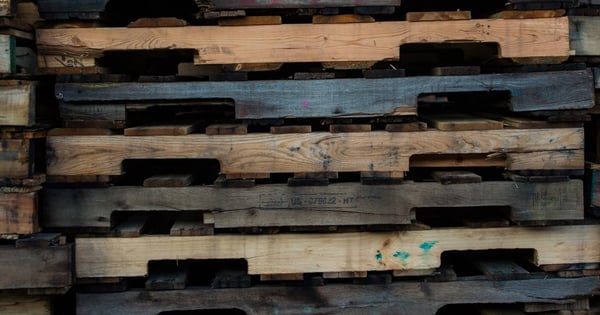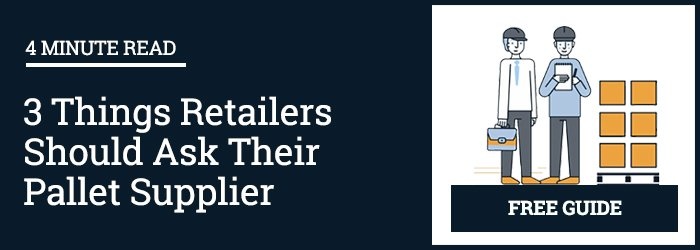You’ve Decided to Switch from New to Recycled Pallets. Now What?
Ensure a smooth transition from new to recycled pallets within your organization by following these tips.
Have you decided to switch from new to recycled pallets? Congratulations, you've made an environmentally friendly and cost-effective decision! Depending on the pallet grade, recycled pallets typically cost half the price of new. And, performance is nearly identical. There’s another bonus: recycled pallets are a more sustainable option. The typical recycled pallet is used 9 times before it’s retired and reused as mulch or fuel pellets.
It’s all good, right? Well, almost. The truth is, you might get some pushback from those accustomed to new pallets. Recycled pallets look different. There are performance and handling differences that will impact your operations. To ensure a seamless transition from new to recycled pallets, consider these five tips:
1) Include your team.
Make sure your team knows why you’re making the switch and understands the differences between new and recycled pallets. Most people appreciate the need to control costs so hopefully that’s an easy case to make. But it’s important to educate people on the visual difference of recycled pallets, the difference between pallet grades, Premium A, A and B; the repair process used to keep recycled pallets on spec, overall performance, and food safety requirements, if applicable.
No time for the full post now? Get a copy of the quick guide for later.
2) Complete a thorough review.
Schedule a side-by-side review of your new recycled pallets and your former pallets with your 48forty representative prior to the transition. Trust me, the visual side-by-side comparison and explanation is invaluable. The purpose is to confirm the pallets you’ve selected are the proper spec—yours and those of your retail customers, which can be very specific. This review will also check compatibility with your equipment and review storage and handling procedures.
3) Follow handling and safety best practices.
Ensure your team adopts the best practices for handling recycled pallets by hosting 48forty-led training at your locations. This includes general guidelines for handling pallets for racking and stacking, if you’re moving pallets by hand or forklift, how to properly load pallets with product, and what to do with damaged pallets.

4) Know your resolution procedures.
Understand how to troubleshoot potential issues and mechanisms for resolution. We take the quality of our recycled pallets seriously. We employ consistent specs across our organization so a Premium A, A or B pallet is always the same spec regardless of where it originated. We train our builders on how to keep repaired pallets on spec.
Should you experience a quality issue, we have a number of options to take the most appropriate corrective action. First, all 48forty pallets are traceable back to the facility and individual who made the repairs. We also will send an engineer to your location to do assessments, run a Kaizen event and provide pallet design system support. These resources are unmatched in the recycled pallet industry.
5) Communicate.
Communicate! Customer feedback is always welcome and we encourage you to share your experience with our pallets with us. If you’re pleased, let us know. If the pallets aren’t meeting your expectations, we want to know that, too. Reach out to you local 48forty facility manager or call our Customer Service Line at 877.779.8577.
Customer satisfaction is 48forty’s top priority and we want you to enjoy all of the advantages of using recycled pallets. If you’d like more information on switching from new pallets to recycled, contact us. We’re happy to provide more information.

